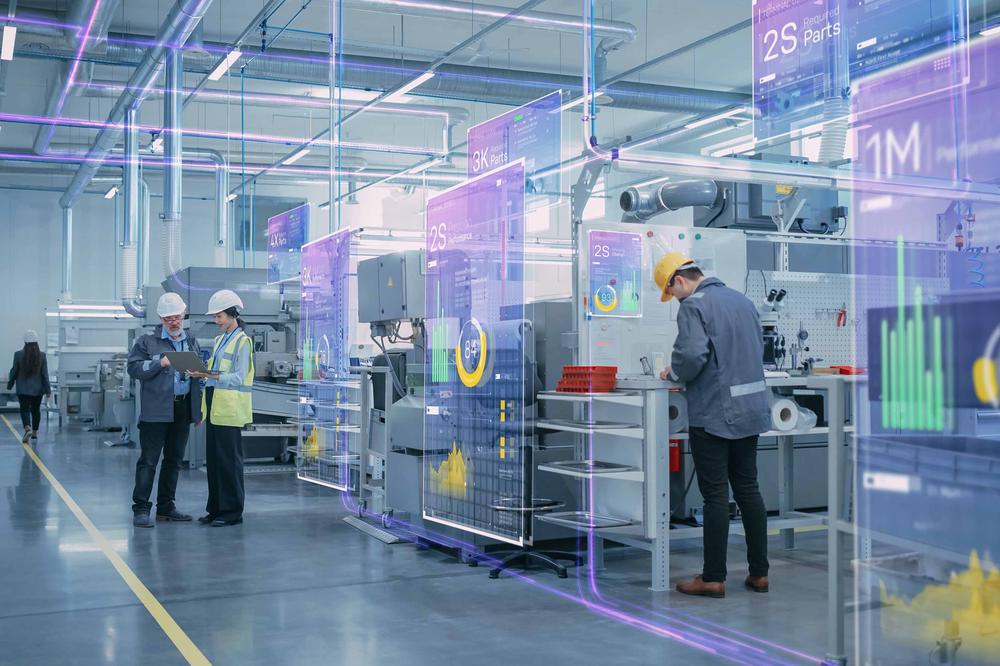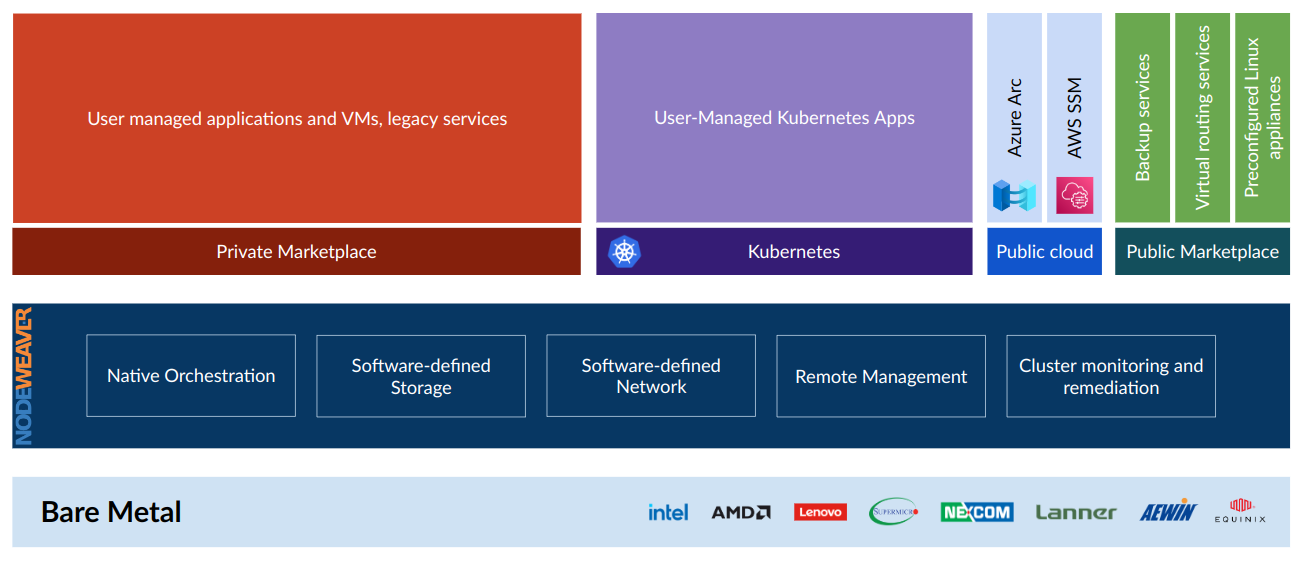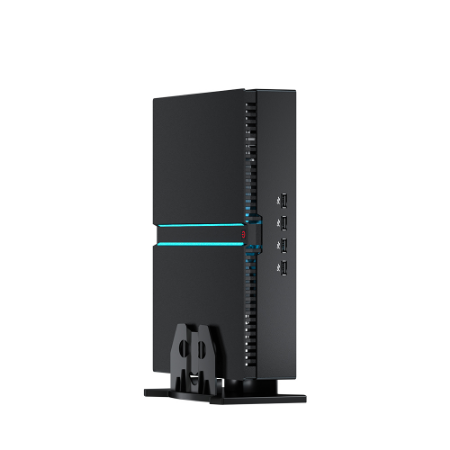
The B2B platform for the best purchasing descision. Identify and compare relevant B2B manufacturers, suppliers and retailers
Close
Filter
Result configuration
Continents
Select continent
Locations
Result types
Company type
Select company type
Industries
Select industry
Company status
Select company status preset
Number of employees
Min.
Max.
Founding year
Edge Computing News
Bristol, United Kingdom
A
11-50 Employees
-
Key takeaway
Red Hat and Gcore are key players in the edge computing landscape, with Gcore launching FastEdge, a serverless product that enhances application deployment and performance. Additionally, IBM's collaboration with American Tower aims to accelerate the deployment of hybrid, multi-cloud computing platforms at the edge, further emphasizing the growing importance of edge solutions in modern technology.
Reference
Core business
Edge Computing News | Latest Edge Computing News & Insights
Edge Computing provides the latest edge computing news and trends. Explore industry research and reports from the frontline of edge computing news.
STAQO
Dadri, India
D
251-500 Employees
-
Key takeaway
Staqo emphasizes its commitment to innovation and transformation, highlighting its expertise in edge computing. This focus on advanced technology positions Staqo as a key player in enhancing operational efficiency and addressing challenges in inventory and distribution.
Reference
Product
Edge Computing - Staqo
Friendtrol Technologies Inc.
Taipei, Taiwan
11-50 Employees
2018
Key takeaway
Edge computing offers compute and storage resources with strong connectivity near traffic-generating devices, enabling the delivery of new services that demand high performance.
Reference
Service
Friendtrol - Service
Looking for more accurate results?
Find the right companies for free by entering your custom query!
25M+ companies
250M+ products
Free to use
Trilogy Networks
Boulder, United States
B
11-50 Employees
2013
Key takeaway
The company is actively developing a secure network and dynamic compute ecosystem that enhances edge computing capabilities, particularly in urban areas with existing infrastructure. Their focus on supporting IoT, 5G/LTE networks, and cloud-native applications positions them to deliver edge solutions more efficiently and cost-effectively than competitors.
Reference
Product
IoT Data | Trilogy Networks
Real-Time Analytics at the Edge…
ChinaCache
Dongcheng District, China
D
1001-5000 Employees
1998
Key takeaway
EdgeNext is a global edge cloud service provider that enhances digital experiences through its specialized services in various regions, ensuring fast and secure IT implementation. Their focus on edge computing enables seamless and efficient online interactions, particularly benefiting sectors like online gaming.
Reference
Core business
EdgeNext Edge Cloud Services
blocz Decentralised & Private Cloud Solutions
London, United Kingdom
A
1-10 Employees
2016
Key takeaway
The company, blocz, offers a comprehensive EDGE cloud computing platform that includes a variety of computing and networking services, making it a key provider of Edge solutions. Their infrastructure supports the development of next-generation applications, including AI and decentralized web solutions, tailored for organizations and developers to scale based on demand.
Reference
Core business
blocz Smart EDGE |
Green Edge Computing Corp
Vancouver, Canada
A
1-10 Employees
2021
Key takeaway
Green Edge Computing Corp focuses on revolutionizing data handling through its GECCO EdgePod™, a compact and low-power edge computing appliance. It enables efficient processing, analysis, and storage of data with low latency, making it ideal for applications in various industrial sectors.
Reference
Core business
Green Edge Computing Corp – Compact, low-power modular platform for intense edge computing applications
Trustgrid
Austin, United States
B
11-50 Employees
2016
Key takeaway
The Trustgrid team specializes in edge computing solutions, offering a platform that integrates software-defined WAN, zero trust access, and edge computing technologies to enhance connectivity and application delivery. Their Trustgrid EdgeCompute product provides a serverless computing environment tailored for applications with on-premise needs.
Reference
Product
EdgeCompute - trustgrid.io
Trustgrid EdgeCompute provides a serverless computing platform for deploying and supporting applications with on-premise requirements.
Ormuco
Montreal, Canada
A
11-50 Employees
2008
Key takeaway
Ormuco is committed to being a leader in edge computing, offering a wide range of solutions and use cases that distinguish it in the industry. With partnerships with major telecommunications companies and a focus on transforming idle infrastructure into compute nodes, Ormuco supports the deployment of edge-native services across various sectors.
Reference
Core business
Ormuco - Building the World's Largest Edge Computing Platform
Monetize the edge with complete edge computing lifecycle management. Thousands of users around the world trust Ormuco's IaaS, PaaS, and SaaS solutions.
Veea Inc.
New York, United States
B
51-100 Employees
2013
Key takeaway
The Veea Edge Platform significantly advances edge computing and IoT connectivity through its VeeaHubs, which feature powerful quad-core CPUs and a secure, Linux-based environment. This platform not only enhances performance and security but also simplifies management across a scalable mesh network, making it a compelling solution for modern edge computing needs.
Reference
Product
Edge Platform - Veea
Discover the benefits of edge computing and how Veea's Edge Platform is making new & existing systems more secure, cost-effective and responsive
Technologies which have been searched by others and may be interesting for you:
A selection of suitable products and services provided by verified companies according to your search.

Product
NodeWeaver
Go to product

Product
Polywell i2316W
Go to product
Edge computing refers to the practice of processing data near the source of data generation rather than relying solely on centralized data centers. This approach minimizes latency and bandwidth use by handling data at the "edge" of the network, closer to where it is created. It enables faster data processing, real-time analytics, and improved responsiveness for applications such as IoT, autonomous vehicles, and smart cities. By decentralizing computing resources, businesses can enhance their operational efficiency and reduce the costs associated with data transmission. As more devices connect to the internet, edge computing becomes crucial for managing the massive amounts of data generated and ensuring that critical insights are delivered in a timely manner.
Edge Computing significantly enhances data processing efficiency by reducing latency and bandwidth usage. By processing data closer to the source, such as IoT devices or local servers, it minimizes the time taken to send data to centralized data centers. This proximity allows for real-time analysis and quicker decision-making, which is crucial for applications like autonomous vehicles or smart manufacturing. Additionally, with less data needing to be transmitted over long distances, network congestion is reduced, leading to more efficient use of bandwidth. This not only improves performance but also lowers costs associated with data transfer and storage. Overall, Edge Computing streamlines data handling by enabling localized processing, resulting in faster and more efficient operations.
1. Reduced Latency
Edge computing minimizes the distance data must travel, decreasing latency and improving response times. This is crucial for applications that require real-time data processing, such as autonomous vehicles and industrial automation.
2. Bandwidth Efficiency
By processing data closer to the source, edge computing reduces the amount of data sent to central servers. This leads to better bandwidth utilization, lowering costs and allowing for the handling of more data in environments with limited connectivity.
3. Enhanced Security
Edge computing can improve security by processing sensitive data locally instead of sending it over the internet. This reduces the risk of data breaches and allows for more robust security measures tailored to specific locations and environments.
4. Improved Reliability
Local processing means that applications can continue to function even if connectivity to the central server is lost. This increases the reliability of services, particularly in remote or unstable network conditions.
5. Scalability
Edge computing facilitates scalable solutions by distributing processing power across multiple devices and locations. This allows businesses to expand their operations without overwhelming central systems, making it easier to manage peak loads and growing data demands.
Edge Computing enhances data security by processing information closer to the source rather than relying solely on centralized cloud servers. This localized data handling reduces the risk of exposure during transmission over networks, thereby minimizing potential attack vectors. By keeping sensitive data within the edge network, organizations can implement specific security measures tailored to local conditions, such as advanced encryption and access controls. Additionally, edge devices can quickly identify and respond to security threats in real-time, thereby improving incident response times. This proactive approach to security allows for better monitoring and management of data, creating a more resilient infrastructure against cyber threats. As a result, organizations can ensure a higher level of data integrity and confidentiality.
1. Manufacturing
Edge computing enhances operational efficiency in manufacturing by enabling real-time data processing and analysis at the source. This technology allows for predictive maintenance and immediate decision-making, reducing downtime and optimizing production.
2. Healthcare
The healthcare industry benefits significantly from edge computing through improved patient monitoring and data management. With real-time processing of medical data, healthcare providers can deliver timely interventions and enhance patient care while ensuring compliance with data privacy regulations.
3. Transportation
Transportation and logistics companies leverage edge computing for real-time tracking of vehicles and goods. This technology aids in optimizing routes, reducing fuel consumption, and improving overall supply chain efficiency through instant data insights.
4. Retail
In retail, edge computing facilitates personalized customer experiences by analyzing shopper behavior in real-time. It enables inventory management and enhances point-of-sale systems, leading to improved customer satisfaction and operational efficiency.
5. Energy and Utilities
The energy sector utilizes edge computing for monitoring and managing distributed energy resources. Real-time data processing helps in grid management, predictive maintenance of equipment, and optimizing energy consumption.
6. Smart Cities
Smart city initiatives benefit from edge computing by enabling real-time data analysis for traffic management, public safety, and resource allocation. This technology supports the efficient functioning of urban infrastructure, enhancing the quality of life for residents.
Some interesting numbers and facts about your company results for Edge Computing
| Country with most fitting companies | United States |
| Amount of fitting manufacturers | 8002 |
| Amount of suitable service providers | 7606 |
| Average amount of employees | 11-50 |
| Oldest suiting company | 1998 |
| Youngest suiting company | 2021 |
20%
40%
60%
80%
Some interesting questions that has been asked about the results you have just received for Edge Computing
What are related technologies to Edge Computing?
Based on our calculations related technologies to Edge Computing are Big Data, E-Health, Retail Tech, Artificial Intelligence & Machine Learning, E-Commerce
Who are Start-Ups in the field of Edge Computing?
Start-Ups who are working in Edge Computing are Green Edge Computing Corp
Which industries are mostly working on Edge Computing?
The most represented industries which are working in Edge Computing are IT, Software and Services, Other, Telecommunications, Electronics and Electrical engineering, Consulting
How does ensun find these Edge Computing Companies?
ensun uses an advanced search and ranking system capable of sifting through millions of companies and hundreds of millions of products and services to identify suitable matches. This is achieved by leveraging cutting-edge technologies, including Artificial Intelligence.